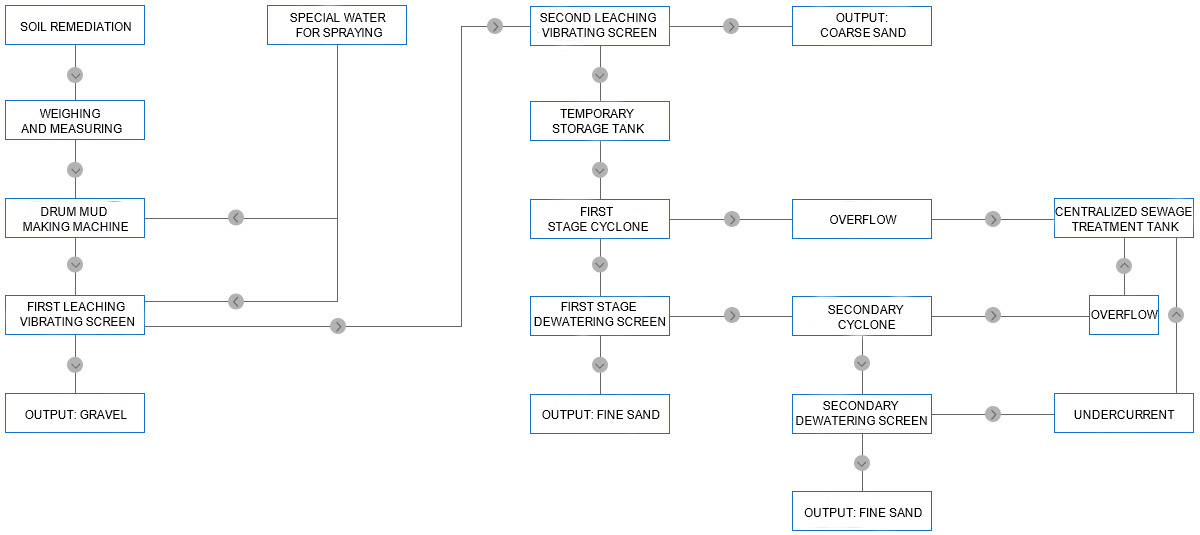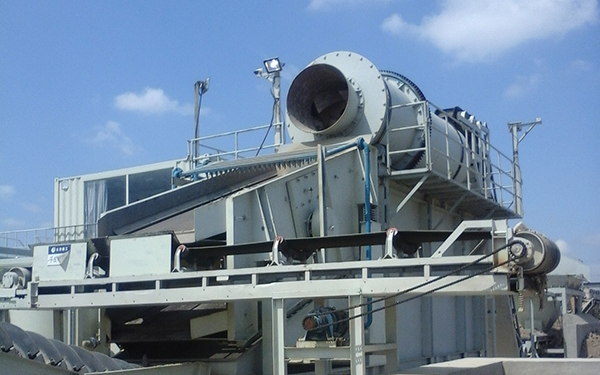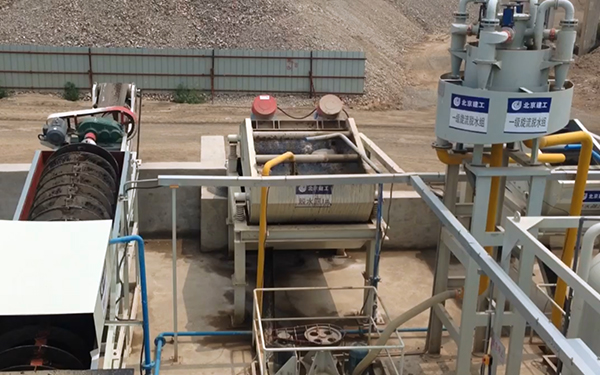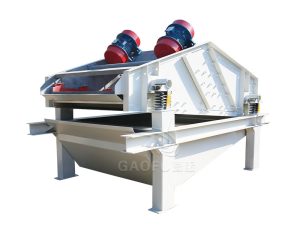Home / Solutions / Other industry / Soil leaching remediation

Soil leaching technology is a soil remediation method that digs out contaminated soil, removes oversized components through screening and divides the soil into coarse materials and fine materials, and then uses leaching agents to clean and remove pollutants, and then processes the contaminated soil. leach out contaminants and backfill the clean soil or transport it to other locations.

1. Feed measurement: The contaminated soil enters the next coarse screening system after feed measurement;
2. Coarse screening: The contaminated soil is sprayed with high-pressure cleaning fluid in the drum mud making machine. After dissociation, moistening and cleaning, the stones are effectively separated from soluble pollutants, coarse sand and fine sand, and then enter the high-frequency vibrating screen. ; Materials with a particle size greater than 10mm slide directly from the upper layer of the high-efficiency vibrating screen into the belt conveyor to complete the discharge of gravel materials; the soil slurry enters the second coarse sand classification screen, and is sprayed with clean water or special eluent to separate 3-10mm The coarse sand is screened out and entered into the belt conveyor or transported out;
3. Fine screening: The slurry of materials with a particle size less than 3mm enters the mud pool buffer, is concentrated by the first-level hydrocyclone, and enters the first-level dehydration screen to complete the discharge of medium-coarse sand; materials with a particle size less than 0.3mm in the slurry under the screen After being concentrated by the second-level hydrocyclone, it enters the second-level dehydration screen to complete the further classification of soil particle size and complete the discharging of soil materials; the mud mixture in the overflow processed by the hydrocyclone group and the underflow of the second-level dehydration screen is Enter the stable integrated equipment for harmless treatment of sewage; at this point, the remediation of contaminated soil by leaching is basically completed.

Soil leaching and remediation site

Soil leaching and remediation site
The gravel, coarse sand, and fine sand processed by the high-service leaching vibrating screen and dewatering vibrating screen have low moisture content and can meet the standards for direct transportation, reducing drying time and transportation costs. The soluble pollutants enter the professional sewage treatment equipment with the slurry for further purification to achieve the purpose of restoration.

Dewatering screen adopt dual-electrode self-synchronization technology, universal eccentric block, adjustable amplitude vibrator. The machine is combined mainly by the screen box, exciter, support system and motor. The two mutually independent vibrators are respectively driven by the tape coupling to do synchronous reverse operation. The centrifugal force generated by two eccentric masses is superposed along the vibration direction and reversely counteracted, thereby forming a single vibration force along the vibration direction, making the screen box reciprocating linear motion.
Dewatering screen, also known as high-frequency dewatering screen, changing the water surface tension of pulp through the exciting force, pulp water through the screen to become the undersize material, and fine material is blocked by the screen to form the filter layer by the vibration of the forward movement of discharge. Dewatering screen is mainly used for detailings dewatering in the mineral processing industry, coal slurry dehydration of coal preparation plant, washed quartz sand dewatering and ceramic slurry dehydration, and wet and dry classification, dehydration, removal and mud removal of medium and fine granular materials in industrial sectors such as electric power, sugar making and salt making.